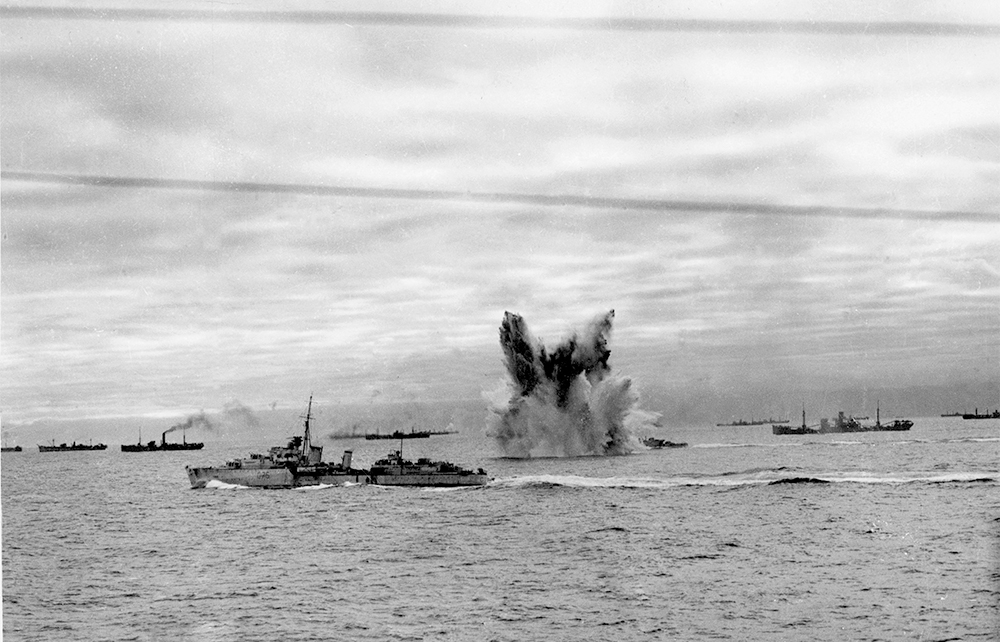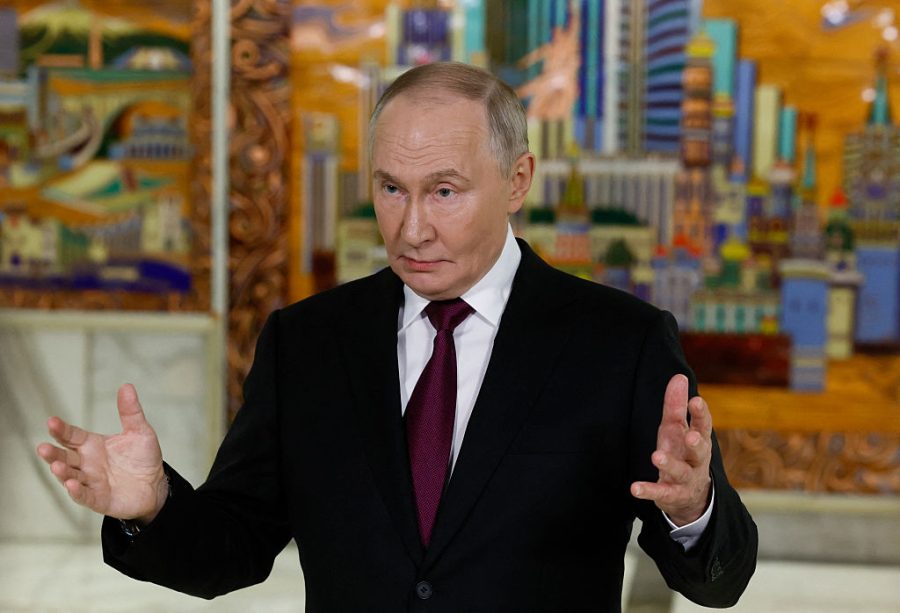You need only mild interest in the second world war to be aware of the Arctic convoys of 1941-45, escorted by the Royal Navy through savage weather and unimaginable cold to deliver supplies to Russia. Their purpose was to keep Russia in the war; the conditions were such that storms could last nine days, blowing ships hundreds of miles apart and playing havoc with communications. That’s not to mention enemy action by submarine, air attack and large surface raiders such as the Tirpitz and Scharnhorst. Some 4.5 million tons of aid were delivered at the expense of 119 ships and 2,763 lives lost. Was it worth it?
Opinion at the time was divided. Some maintained that there was no point in diverting scarce resources to Russia following the German invasion because it would soon either collapse or reach a separate peace deal. Others argued that the point was political, a gesture to keep Russia in the fight because, with its vast resources and willingness to incur any number of casualties, it would eventually prevail unaided. Yet others claimed Russia could be adequately supported via Persia (now Iran) and the Far East, with no need for convoys. Others again thought it essential both politically and militarily to provide Russia with the wherewithal to continue fighting, especially in the early years. This latter view, urged from the start by Churchill and gradually by Roosevelt – in both cases against the inclinations of senior naval and military staff – prevailed. Russia was ‘the key to breaking German land power and limiting the western blood price’.
Soviet appreciation of the efforts and sacrifices made was often grudging, while the demand was for ever more
Andrew Boyd’s account of these and other machinations is authoritative and compelling. He eschews blow-by-blow individual accounts of convoy life on the grounds that these are well covered elsewhere, concentrating instead on the how and why of the strategy at governmental and command level, while offering a continuous and penetrating analysis of its effectiveness.
Boyd also shows how the convoys came to serve another purpose: to deepen Hitler’s fear of a major British assault on German-occupied Norway, which he saw as ‘of decisive importance to the outcome of the war… the zone of destiny’. His anxieties were reinforced by commando and SOE raids, leading him to maintain a substantial garrison in Norway to the end of the war and to station battleships and cruisers in the fjords which could have been more usefully deployed in the Atlantic.
Soviet appreciation of the efforts and sacrifices made – in 1942, 20 per cent of British tank production was sent to Russia – was often at best grudging, while the demand was for ever more. There were occasional instances of gratitude and comradeship, but frequently the treatment of Allied crews and servicemen was curmudgeonly and even hostile. During the Cold War, the Russians downplayed the entire Allied contribution, despite the fact that their armies had relied not only on the weaponry provided – by mid-1942 western explosives underpinned about 50 per cent of Red Army firepower – but also on the locomotives and trucks that moved them, and on vital materials such as telephone wire, rubber and aluminium. Unfortunately, many western commentators swallowed this line, even after it was known that Stalin had privately admitted that his army could never have triumphed without western aid.
Convoy PQ17 notoriously suffered the worst losses – 22 out of 36 ships – on being ordered by the Admiralty to scatter. Boyd’s analysis of the reasons for this disaster is detailed and fair-minded, demonstrating the interplay between personalities, partial knowledge and understandable but erroneous assumptions. Similarly, his analysis of the subsequent Battle of the Barents Sea, in which the naval escort beat off a greatly superior German fleet, shows how luck and chance cut both ways.
But good luck is often earned and Boyd is surely right to stress the navy’s superior seamanship throughout the Arctic operations, along with the aggressive attitude promulgated by the navy’s 1939 Fighting Instructions. These urged commanders to trust their own judgment and always, in Nelson’s words, to ‘engage the enemy more closely’. When in doubt, they added, ‘steer for the sound of the guns’.
It is hard to imagine that Boyd’s comprehensive account will be superseded. No one writing on the subject in future will be able to ignore it, and anyone with the smallest interest in that war will want to read it.







Comments